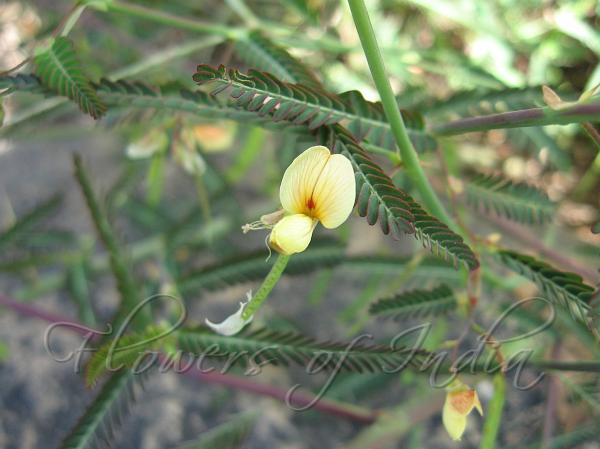|
| Indian Joint Vetch |
|

|

| File size | 1027218 |
| Original date | 9/12/08 3:04 PM |
| Resolution | 2592 x 1944 |
| Flash | Flash did not fire, auto, red-eye reduction |
| Focal length | 5.8mm |
| Exposure time | 1/125s |
| Aperture | 2.6 |
| Focus Distance | |
| Metering Mode | Multi-segment |
| Camera make | Canon |
| Camera model | Canon PowerShot A530 |
| Sensor type | OneChipColorArea |
|
|
|
|
Photo: |
Botanical name: Aeschynomene indica Family: Fabaceae (Pea family)
Synonyms: Aeschynomene diffusa, Aeschynomene kashmiriana, Aeschynomene pumila
Synonyms: Aeschynomene diffusa, Aeschynomene kashmiriana, Aeschynomene pumila
Indian Joint Vetch is an erect branching herb, with scattered spreading
hairs on stems, and stalks. Leaves are compound, 5-10 cm long, with 15-30
pairs of narrow needle-like leaflets, 1-1.5 cm long, rounded at the tips.
Stipules are arrow-shaped, about 1 cm long. Pale yellow flowers are borne
in few flowered racemes. Flowers stalks have 2 bracteoles at base of the
sepals. Flowers are about 1 cm long, pea-flower shaped. Sepal cup is
2-lipped. Pods linear, flat, 6-8-jointed, with central prominent wrinkles
on each joint. Indian Joint Vetch is native to Tropical Africa, Tropical Asia
and Australia. It is found in the Himalayas at altitudes of 200-1300 m.
Flowering: September-October.
| Identification credit: Shaista Ahmad | Photographed at Hebbal Campus, Bangalore. |
• Is this flower misidentified? If yes,